News
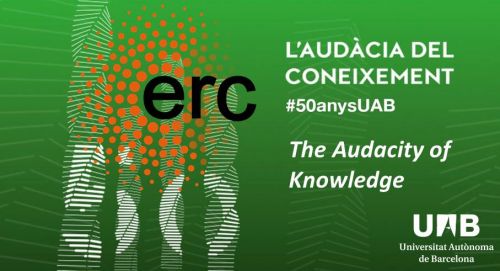
20/09/2018
UAB’s researchers awarded by ERC
UAB’s researchers awarded by ERC
At the beginning of the year, for the 10th anniversary of the European Research Council (ERC) system of grants, we had the opportunity to present the very good results obtained by researchers working in Catalan research centers.
Recently, two researchers from Universidad Autónoma de Barcelona (UAB)’s centers (UAB is a Barcelona Synchrotron Park’s partner) got ERC grants.
ERC awarded a Starting Grant to Joan Llull, associate professor at the UAB Department of Economics and Economic History and research fellow at MOVE (Markets, Organizations, and Votes in Economics). The almost 1.5M euros grant will go towards funding the project DYMOLAMO “Dynamic Modelling of Labor Mobility and Human Capital Accumulation".
Albert Quintana from the Institute of Neuroscience (UAB) was awarded an ERC Proof of Concept grant in order to explore business opportunities, patents and practical applications of the results on antibiotic resistance obtained with the NEUROMITO project Albert carried out: “Elucidating neuronal susceptibility to mitochondrial disease”.
Congratulations!
Recently, two researchers from Universidad Autónoma de Barcelona (UAB)’s centers (UAB is a Barcelona Synchrotron Park’s partner) got ERC grants.
ERC awarded a Starting Grant to Joan Llull, associate professor at the UAB Department of Economics and Economic History and research fellow at MOVE (Markets, Organizations, and Votes in Economics). The almost 1.5M euros grant will go towards funding the project DYMOLAMO “Dynamic Modelling of Labor Mobility and Human Capital Accumulation".
Albert Quintana from the Institute of Neuroscience (UAB) was awarded an ERC Proof of Concept grant in order to explore business opportunities, patents and practical applications of the results on antibiotic resistance obtained with the NEUROMITO project Albert carried out: “Elucidating neuronal susceptibility to mitochondrial disease”.
Congratulations!

14/09/2018
More than 8,600 foreign companies in Catalonia
More than 8,600 foreign companies in Catalonia
Catalonia Trade & Investment is the public agency that works to attract foreign direct investment to Barcelona and Catalonia. On its website, the agency provides a statistical updated (2017) overview of the foreign companies installed in Catalonia.
8,642 companies with at least 50% foreign capital are established in Catalonia. They come from 89 different countries and are located at 85% in the Barcelona area. Germany (13%), France (12%) and the United States (12%) are the most common origins. China, with 91 establishments, enters for the first time the Top20 ranking of countries with the most subsidiaries.
In terms of turnover, companies in the automotive sector dominate (13.4%) followed by food and beverage (12.9%) and finance and insurance (9.4%). 27% of foreign companies export, representing 50% of Catalan exports.
With T-Systems or IBM, the Barcelona Synchrotron Park is part of this dynamics.
More details can be found here.
8,642 companies with at least 50% foreign capital are established in Catalonia. They come from 89 different countries and are located at 85% in the Barcelona area. Germany (13%), France (12%) and the United States (12%) are the most common origins. China, with 91 establishments, enters for the first time the Top20 ranking of countries with the most subsidiaries.
In terms of turnover, companies in the automotive sector dominate (13.4%) followed by food and beverage (12.9%) and finance and insurance (9.4%). 27% of foreign companies export, representing 50% of Catalan exports.
With T-Systems or IBM, the Barcelona Synchrotron Park is part of this dynamics.
More details can be found here.
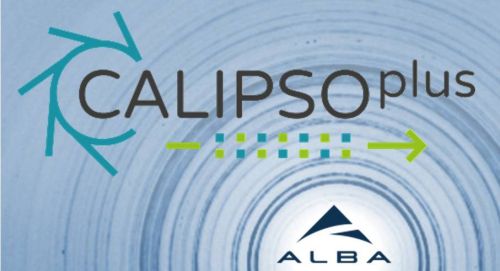
06/09/2018
SMEs: a European call for access to synchrotrons
SMEs: a European call for access to synchrotrons
A synchrotron can be described as a giant microscope: an electron accelerator emits a special light used by researchers to observe the intimate structure of materials.
Observing materials on such a so small scale allows advances in both fundamental and applied sciences. It is the reason why Alba synchrotron and its counterparts in other countries are used by both academic and business researchers. These facilities allow to design new drugs or new materials for electricity transport and storage, improve paints or cements and a long list of examples in chemistry, materials, health, nanotechnology, energy, automobile, sustainability or cultural heritage.
In this context, the European CALIPSOplus program aims, among other things, at facilitating SMEs’ access to synchrotrons and other light sources of the continent: a specific call is open until next December 21 (web) to submit applications.
This initiative led by Alba synchrotron (more information here), aims at giving SMEs the opportunity to access the best light sources in Europe adapted to each need, regardless of the geographical proximity.
Beyond this program, companies that wonder if/how a synchrotron can address or not their R&D challenges can contact Alba’s industrial office that will give them all the explanations and will be able to advise them.
Observing materials on such a so small scale allows advances in both fundamental and applied sciences. It is the reason why Alba synchrotron and its counterparts in other countries are used by both academic and business researchers. These facilities allow to design new drugs or new materials for electricity transport and storage, improve paints or cements and a long list of examples in chemistry, materials, health, nanotechnology, energy, automobile, sustainability or cultural heritage.
In this context, the European CALIPSOplus program aims, among other things, at facilitating SMEs’ access to synchrotrons and other light sources of the continent: a specific call is open until next December 21 (web) to submit applications.
This initiative led by Alba synchrotron (more information here), aims at giving SMEs the opportunity to access the best light sources in Europe adapted to each need, regardless of the geographical proximity.
Beyond this program, companies that wonder if/how a synchrotron can address or not their R&D challenges can contact Alba’s industrial office that will give them all the explanations and will be able to advise them.
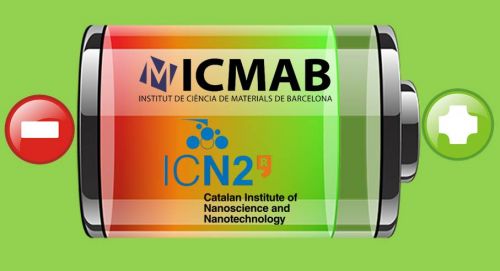
27/07/2018
ICMAB and ICN2 work on the batteries of the future
ICMAB and ICN2 work on the batteries of the future
The challenge to increase the share of green electricity in the energy mix depends on materials science: more efficient photovoltaic cells and more powerful wind turbines to produce more or higher density batteries to store better are some of the challenges that need physics and chemistry to invent and develop the required materials.
In that way, two prospective and promising research results in the field of batteries have been recently published by two top level materials science labs both located in the Universitat Autònoma de Barcelona (UAB) campus, our neighbor and partner: the Institute of Materials Science of Barcelona (ICMAB) and the Catalan Institute of Nanoscience and Nanotechnology (ICN2).
In ICMAB, for the first time, calcium has been electrochemically extracted from a metal oxide in a partially reversible way. According to the researchers, this is a huge step towards the development of rechargeable calcium batteries, a more economical (and with more energy density) alternative than the current most common Li-ion batteries. The study, published in Dalton Transactions, was carried out in collaboration with Toyota Motor Europe, which shares the patent.
In ICN2, researchers that explore conceptual frontiers in the field of electricity storage have developed what they consider a first step and proof of concept of the possible application of electroactive nanofluid electrodes in alternative flow batteries. This work will be released in Electrochimica Acta next August.
ICMAB: http://icmab.es/new-boost-to-future-calcium-batteries
ICN2: https://icn2.cat/en/novel-energy-oriented-materials-group?publications
In that way, two prospective and promising research results in the field of batteries have been recently published by two top level materials science labs both located in the Universitat Autònoma de Barcelona (UAB) campus, our neighbor and partner: the Institute of Materials Science of Barcelona (ICMAB) and the Catalan Institute of Nanoscience and Nanotechnology (ICN2).
In ICMAB, for the first time, calcium has been electrochemically extracted from a metal oxide in a partially reversible way. According to the researchers, this is a huge step towards the development of rechargeable calcium batteries, a more economical (and with more energy density) alternative than the current most common Li-ion batteries. The study, published in Dalton Transactions, was carried out in collaboration with Toyota Motor Europe, which shares the patent.
In ICN2, researchers that explore conceptual frontiers in the field of electricity storage have developed what they consider a first step and proof of concept of the possible application of electroactive nanofluid electrodes in alternative flow batteries. This work will be released in Electrochimica Acta next August.
ICMAB: http://icmab.es/new-boost-to-future-calcium-batteries
ICN2: https://icn2.cat/en/novel-energy-oriented-materials-group?publications
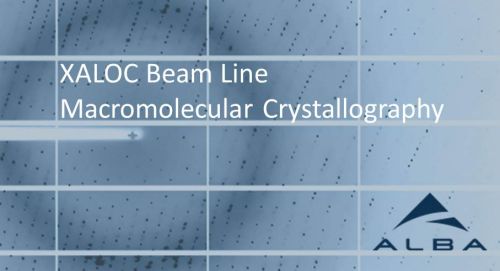
20/07/2018
Molecular mimicry does not mislead ALBA!
Molecular mimicry does not mislead ALBA!
Many intracellular pathogens use molecular mimicry to ensure their survival. A part of a protein of the pathogen resembles another protein totally different from the host and many intracellular microorganisms use this capability to interfere in cellular processes that enable their survival and replication.
Researchers from the CIC bioGUNE in the Basque Country in collaboration with other groups from the United States have carried out experiments at the XALOC beamline of the ALBA Synchrotron and I04 beamline of Diamond Light Source (UK). The results enabled scientists to solve the structure of RavN, a protein of the Legionella pneumophila bacteria that uses this molecular mimicry to trick the infected cell.
Researchers have showed that the structure of RavN has a certain structural similarity with E3 eukaryotes (a set of enzymes) despite its different composition. This result allows making progress in the understanding of the molecular mechanisms active in Legionnaires' disease that can transform into pneumonia and kill infected people.
Article: Yi-Han Lin et al. in PLOS Pathogen
Researchers from the CIC bioGUNE in the Basque Country in collaboration with other groups from the United States have carried out experiments at the XALOC beamline of the ALBA Synchrotron and I04 beamline of Diamond Light Source (UK). The results enabled scientists to solve the structure of RavN, a protein of the Legionella pneumophila bacteria that uses this molecular mimicry to trick the infected cell.
Researchers have showed that the structure of RavN has a certain structural similarity with E3 eukaryotes (a set of enzymes) despite its different composition. This result allows making progress in the understanding of the molecular mechanisms active in Legionnaires' disease that can transform into pneumonia and kill infected people.
Article: Yi-Han Lin et al. in PLOS Pathogen
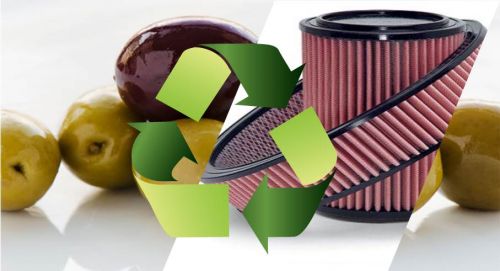
13/07/2018
How about olive pits to filter the air?!
How about olive pits to filter the air?!
The Ideas Generation Program carried out by PRUAB, the UAB university research park, is sponsored by the Barcelona Synchrotron Park (BSP). It is based on the collection of technological challenges that are submitted to the scientific community in order to try to find solutions through an ideas competition.
The 8th program is an initiative from the Catalan Ministry for Territory and Sustainability in order to get proposals in the field of circular economy. Best ideas were awarded last week.
First prize (2,500 € and 6 months of incubation at PRUAB) was for the Greene3D project. Laura López Mir, PhD from the Barcelona Institute of Materials Science (ICMAB) and Beatriz Espinosa Aquino, PhD researcher at the Institute of Environmental and Science Technology (ICTA) (both institutes are located on the UAB campus), propose the development of new sustainable materials for 3D printing based on a mixture of bioplastics and olives pits, an abundant organic waste in Spain. Among other potential applications of this 3D-printable material, both entrepreneurs point out air filters or light elements with acoustic and thermal insulation properties.
Second prize (1,500 € and 6 months of incubation at PRUAB) was for the Cerclab project leaded by Marta Santamaría, researcher at the Polytechnic University of Catalonia (UPC), and Gerardo Ezequiel and Erica Volpini, founders and partners of Semilla. This is a 4.0 laboratory that aims to take advantage of recycled plastic to create new valuable products. From a perspective of social and collaborative innovation, Cerclab includes a physical space for the recovery and transformation of recycled plastic from packaging waste.
The project also includes an open innovation web platform to offer social and technological innovation courses, and foster collaborations and synergies among users by promoting the socio-occupational integration of people in risk of exclusion.
Congratulations!
The 8th program is an initiative from the Catalan Ministry for Territory and Sustainability in order to get proposals in the field of circular economy. Best ideas were awarded last week.
First prize (2,500 € and 6 months of incubation at PRUAB) was for the Greene3D project. Laura López Mir, PhD from the Barcelona Institute of Materials Science (ICMAB) and Beatriz Espinosa Aquino, PhD researcher at the Institute of Environmental and Science Technology (ICTA) (both institutes are located on the UAB campus), propose the development of new sustainable materials for 3D printing based on a mixture of bioplastics and olives pits, an abundant organic waste in Spain. Among other potential applications of this 3D-printable material, both entrepreneurs point out air filters or light elements with acoustic and thermal insulation properties.
Second prize (1,500 € and 6 months of incubation at PRUAB) was for the Cerclab project leaded by Marta Santamaría, researcher at the Polytechnic University of Catalonia (UPC), and Gerardo Ezequiel and Erica Volpini, founders and partners of Semilla. This is a 4.0 laboratory that aims to take advantage of recycled plastic to create new valuable products. From a perspective of social and collaborative innovation, Cerclab includes a physical space for the recovery and transformation of recycled plastic from packaging waste.
The project also includes an open innovation web platform to offer social and technological innovation courses, and foster collaborations and synergies among users by promoting the socio-occupational integration of people in risk of exclusion.
Congratulations!









